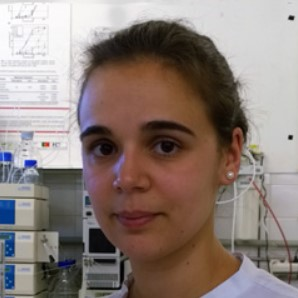Advances in the Valorization of Fruit and Vegetable Wastes and By-Products
A special issue of Plants (ISSN 2223-7747). This special issue belongs to the section "Phytochemistry".
Deadline for manuscript submissions: closed (31 July 2023) | Viewed by 12631
Special Issue Editors
Interests: food science; food chemistry; natural products; food waste recovery
Special Issues, Collections and Topics in MDPI journals
Interests: food waste; extraction; bioactive compounds; multivariate analysis
Special Issues, Collections and Topics in MDPI journals
Interests: bioactive compounds; food chemistry; phenolic compounds; chromatography; mass spectrometry
Special Issues, Collections and Topics in MDPI journals
Interests: biochemistry of microorganisms: bioremediation, agro-industrial residues; bioactive compounds; circular economy
Special Issues, Collections and Topics in MDPI journals
Special Issue Information
Dear Colleagues,
Fruits and vegetables are a magnificent source of nutrients, with countless health benefits. The majority of global consumers are not meeting the daily recommended intake of these foods. Despite this fact, an immense mass of fruits and vegetables produced and processed by the food industry is wasted. There are a number of possibilities to recover wasted fruits and vegetables as well as the by-products of fruits and vegetables for manufacturing value-added products to meet consumers’ demand for more natural and healthier products, improve their diet sustainability and, not least, to reduce the environmental impact. In this sense, green extraction approaches can enhance the economic relevance of the obtained natural products. Environmentally friendly techniques allied with prolific natural matrices may result in sustainable bioactive formulations of high industrial interest.
The forthcoming Special Issue aims to provide quality comprehensive research and development contributions that address key challenges and topics related to the valorization and exploitation of fruit and vegetable waste and by-products for the obtainment of high-added-value natural ingredients for the industry. There is particular interest in: (i) green approaches for the recovery of bioactive compounds from food vegetable residues; (ii) characterization studies regarding nutritional, phytochemical, and biological profiles of wasted horticultural products; and (iii) the development of novel food, cosmetical and pharmaceutical products based on these matrices or their bioactive extracts. Nonetheless, other related research findings are greatly encouraged. Authors are cordially invited to contribute original research articles and reviews. All research will be published in open-access format.
Prof. Dr. Rúbia Carvalho Gomes Corrêa
Prof. Dr. Acácio Antonio F. Zielinski
Dr. Maria Inês Dias
Prof. Dr. Rosane Marina Peralta
Prof. Dr. José Eduardo Gonçalves
Guest Editors
Manuscript Submission Information
Manuscripts should be submitted online at www.mdpi.com by registering and logging in to this website. Once you are registered, click here to go to the submission form. Manuscripts can be submitted until the deadline. All submissions that pass pre-check are peer-reviewed. Accepted papers will be published continuously in the journal (as soon as accepted) and will be listed together on the special issue website. Research articles, review articles as well as short communications are invited. For planned papers, a title and short abstract (about 100 words) can be sent to the Editorial Office for announcement on this website.
Submitted manuscripts should not have been published previously, nor be under consideration for publication elsewhere (except conference proceedings papers). All manuscripts are thoroughly refereed through a single-blind peer-review process. A guide for authors and other relevant information for submission of manuscripts is available on the Instructions for Authors page. Plants is an international peer-reviewed open access semimonthly journal published by MDPI.
Please visit the Instructions for Authors page before submitting a manuscript. The Article Processing Charge (APC) for publication in this open access journal is 2700 CHF (Swiss Francs). Submitted papers should be well formatted and use good English. Authors may use MDPI's English editing service prior to publication or during author revisions.
Keywords
- sustainable food systems
- upcycling food residues
- fruit and vegetable wastes
- agro-industrial by-products
- green extraction
- clean technologies
- bioactive compounds recovery
- natural ingredients
- food security
- sustainable diet








